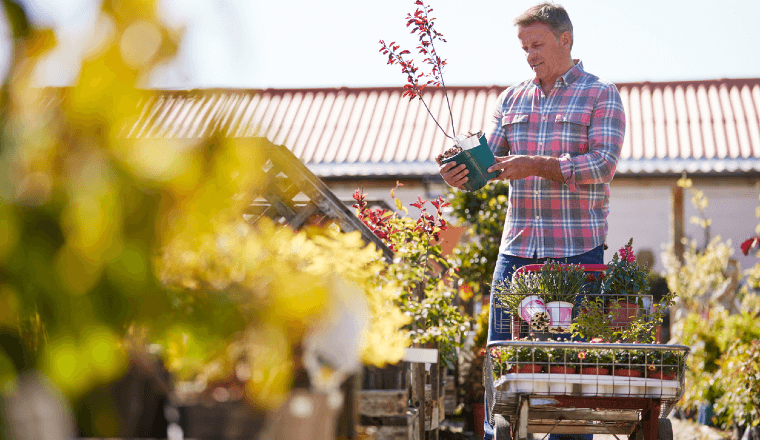In this article
- What to consider before planting a verge tree
- Most local governments across Perth will plant and maintain your verge tree for free
- How to avoid damaging underground services when planting verge trees
- Trees are important assets for the wider community to combat urban heat
This tree list has been prepared to assist local governments when planting trees on verges and in public open space near Water Corporation assets. Residents who want a tree on their verge are encouraged to contact their local government, with most planting and maintaining verge trees for free.
Street trees provide shade and help to cool temperatures, provide oxygen and clean air, create wildlife-friendly corridors, and help create beautiful neighbourhoods. But when it comes to tree selection, it’s just as important to consider how the tree or shrub will look below ground.
Tree roots can rupture water pipes, creep into underground wastewater pipes and cause damage and even blockages. While falling leaves can block up stormwater drains. So, when choosing a verge tree, there are a few things to consider to ensure they don’t cause damage to underground infrastructure.
Download our tree guide

What waterwise trees can I plant?
Use our handy waterwise tree list to understand which trees and shrubs will suit your streetscape, and the amount of maintenance they require. There are a range of sizes, as well as both WA natives and exotic trees and shrubs to select from.
Waterwise trees tend to have low-invasive root systems which reduces the risk of damage to underground assets.
Our waterwise tree list also includes the amount of maintenance each tree requires. For example with deciduous trees, you will need to collect fallen leaves to keep them out of stormwater drains.
Once established, waterwise trees only need to be watered once or twice a week. Many of these trees will flourish over the summer months with minimal watering.
Where can I plant waterwise trees?
Prior to planting a verge tree, you must contact Before You Dig Australia to make sure underground pipes won’t be damaged or interfered with. This is an essential step as vital public assets such as water, electrical, gas and telecommunication infrastructure are often located underneath a verge.
All verge trees must be planted in accordance with the Utilities Providers Code of Practice Guide, which states that trees must be planted 2.7m from the property boundary line and minimum of 0.5m from water assets.
For local government planting medium and large street trees (mature height over 5m), please see our guidance for Working near Water Corporation assets and seek approval for works if working within 10m of our assets. We will work with you to help to ensure the longevity of the tree and minimise the possibility of interruption to local water supplies. Any damage or interference with a Water Corporation underground asset may result in a fine.
 When planting a verge tree make sure to take note of the clearances.
When planting a verge tree make sure to take note of the clearances.
The impacts of planting the wrong tree
Trees and shrubs are an important part of our built environment. But, if they’re not carefully chosen, they may cause avoidable damage to infrastructure.
Trees and shrubs rely on their roots to find moisture and nutrients. And water and wastewater pipes can be an attractive moisture source. All it takes is for the root to sneak into a crack in the pipe. Once inside the pipe, the root can grow quickly, causing a reduction in water flow or even a complete blockage. Often, complete sections of pipe need to be replaced which can be expensive.
Waterwise tree list
The following list is intended as a guide to assist local governments with selecting the right trees or shrubs for verges and public open space. Each tree has been scored on a water rating and level of root invasiveness by specialist tree consultants.
Water rating
- 0 drop - once established will require no supplementary watering.
- 1 drop - requires watering once a week once established.
- 2 drop - requires watering twice a week once established.
Root invasiveness
- Low - the species doesn’t display vigorous root development and isn't commonly associated with damage to pipes.
- Moderate - the species may cause some damage to pipes. Tree species are more likely to originate in more temperate climates than the Perth region, and have a higher requirement for water.
- High - these species have vigorous root development. Trees within this category are generally not recommended for planting near pipes. They may also be included within a list of trees considered unsuitable for verge or urban garden planting.
Flowering type
- Showy / ornamental - trees have large flowers or voluminous displays of flowers.
- Inconspicuous / small - trees have flowers, however these may be small, sparse, or not ornamental
- No flowers - tree does not have flowers, or in the case of figs are cryptic

 When planting a verge tree make sure to take note of the clearances.
When planting a verge tree make sure to take note of the clearances.